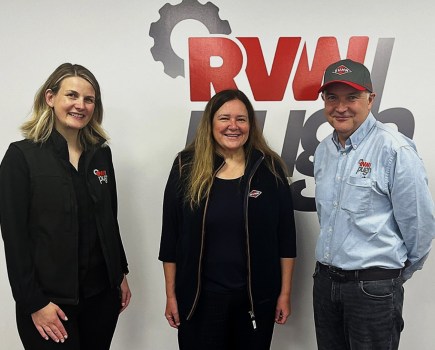British farmers spent around £1.9 billion on farm equipment in 2014 but the provisional view from the Agricultural Engineers Association (AEA) – based on indications from the first half of this year – is that expenditure may be down by 10% in 2015. Tractors are generally the first indicator of activity and 5,964 units of over 50hp were registered in the first 6 months of 2015 – a decrease of 14% on the previous year. The average power has continued to move up, to 154.4 hp this year. Another significant sub-sector of the market is the combine harvester; retail sales have fallen sharply in the current seasonal year (September to August) and may drop by 20% to 600-650 units. “It may be that this will prove to be a normal level and the high sales volumes of previous seasons have been something of an anomaly,” says AEA economist Chris Evans. A further major sector in terms of machine value is the self-propelled forage harvester, retail sales of which may reach 170 units in the seasonal year. “This would be a useful increase on a year earlier and this is one of the few machine types to show an increase,” adds Mr Evans. “The grass forage season has been quite favourable and there has been some stimulus from the AD plants.” For other machine types the AEA relies on statistics covering wholesale data, that is deliveries to dealers, and generally there has been reluctance from dealers to order stock when demand is uncertain and there is a surplus of unsold second hand equipment. “With a few exceptions, such as forage harvesters and trailed sprayers, deliveries of units of most products are lower than they were a year ago with the grassland equipment faring a little better than arable,” he continues. “Farm product prices have been depressed across the board so far this year and although lower input prices have assisted in mitigating the full impact, farm income streams are expected to diminish. Perhaps most concern is evident in the dairy sector where hopes for a stabilisation of declining milk prices have so far been disappointing.” Mr Evans says a further negative factor arises from the strength of sterling against the euro which both reduces British competitiveness and leads to a lower sterling value of the Basic Farm Payments. “It can be said that there is little immediate confidence throughout farming and this leads to caution in as far as commitment to expenditure is concerned.” The single prominent factor restraining sales of equipment is the build-up of unsold used kit in dealers’ yards; whilst domestic demand for traded-in equipment is not strong. “The real problem relates to the lack of export demand which has been exacerbated by that strength of sterling against the euro.” The AEA expectations for the second half of this year are for conditions to remain subdued but when compared with last year the percentage drift is likely to be lower.
British farmers spend less on new equipment
British farmers spent around £1.9 billion on farm equipment in 2014 but the provisional view from the Agricultural Engineers Association (AEA) – based on indications from the first half of this year – is that expenditure may be down by 10% in 2015. Tractors are generally the first indicator of activity and 5,964 units of […]





